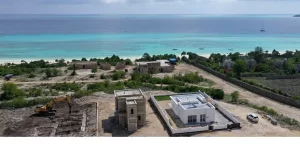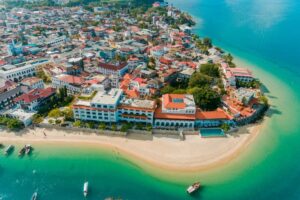
Unguja. Long before modern spas became a global wellness trend, Zanzibar was already nurturing a centuries-old tradition of healing, purification, and community through hammam bathing art.
Rooted in the island’s diverse cultural influences—from Arab and Persian to Indian and African—the hammam tradition in Zanzibar represents far more than just a place to cleanse the body. It is a sanctuary of relaxation, ritual, and royal legacy.
At the heart of this heritage stand the Kidichi Persian Baths, located just five kilometers from Stone Town.
Built in the mid-19th century by Seyyid Said bin Sultan, the Sultan of Oman and Zanzibar, the baths were a royal gift to his Persian wife, Princess Sheherazade of Shiraz, Iran.
Designed in classical Persian style, with domed ceilings, thick stone walls, and ingenious plumbing for hot and cold water, the Kidichi Baths were once a symbol of regal indulgence and cross-cultural connection.
Unlike modern public spas, these baths were exclusively private, reserved for the Sultan’s family.
Though no longer operational, the well-preserved site offers a rare glimpse into the opulence of Zanzibar’s Sultanate era and remains a protected heritage monument, reminding visitors of the island’s rich multicultural past.
A gift of wellness and a cultural symbol
The hammam, also known as a public bathhouse or steam bath, has deep historical roots in the Islamic world.
In Zanzibar, the tradition was popularized during the reign of Sultan Barghash bin Said (1870–1888), who oversaw the construction of Hamamni Persian Baths—Zanzibar’s first public hammam.
Located in the heart of Stone Town, the Hamamni Baths were designed by Persian architect Haji Gulam Hussein.
The complex included hot and cold bathing rooms, massage spaces, private shaving areas, and a hexagonal pool, all heated by underground aqueducts.
These facilities served the elite of Zanzibari society and became essential spaces not only for physical purification but also for social interaction.
“Bathing in a hammam was not just about getting clean—it was about gathering, sharing stories, and reconnecting,” notes a heritage guide from Stone Town.
“These spaces brought people together across generations and classes,” added the guide.
The art and science of Hammam
Beyond its historical significance, the hammam experience is a holistic ritual designed to rejuvenate the body and relax the mind.
Traditionally, a hammam session includes exposure to warm steam, followed by intense exfoliation using natural soaps and scrubs, and concluded with a massage that relieves muscle tension and improves circulation.
A cultural crossroad
Zanzibar’s hammam heritage is a reflection of its unique place on the ancient trade routes, where Indian, Persian, Arab, and African cultures met and mingled.
The bathhouses that once dotted the island were symbols of this multicultural fusion, both in design and function.
The Omani influence in the 17th century deepened this connection, bringing Persian architectural traditions into royal buildings.
With the arrival of Indian merchants, Zanzibar’s bathhouse culture expanded even further, adapting rituals and practices from across the Indian Ocean world.
“Zanzibar’s bathhouses are a perfect metaphor for the island itself,” says a historian from the Department of Antiquities.
“They are places where different traditions came together to create something uniquely Zanzibari,” adds the historian.
Reviving the ritual
In recent years, efforts have been made to preserve and revive the hammam tradition.
Initiatives like Zanzibar Hamam—a modern-day spa opened in one of the island’s old buildings—seek to recreate the authentic experience of royal Zanzibari bathing, combining traditional techniques with modern wellness practices.
At the forefront of this revival is Hammam Zanzibar, a thoughtfully restored sanctuary nestled near St. Joseph’s Cathedral and the ever-bustling Jaws Corner.
Housed within an old Stone Town building rich with character, the spa blends timeless traditions with contemporary wellness in a setting that is both elegant and deeply rooted in heritage.
As Zanzibar’s first and premier hammam, this establishment is more than just a spa—it is a celebration of the island’s cultural soul.
Here, visitors can immerse themselves in the same ancient rituals that once soothed the sultans, connecting with a tradition that honours healing, hospitality, and heritage.
From the steamy chambers of Kidichi to the echoing halls of Hamamni, the hammam tradition is more than a historical footnote—it is a living symbol of Zanzibar’s rich cultural soul.
In every drop of steam and every polished stone lies a story of wellness, royalty, and connection, waiting to be rediscovered by a new generation.














